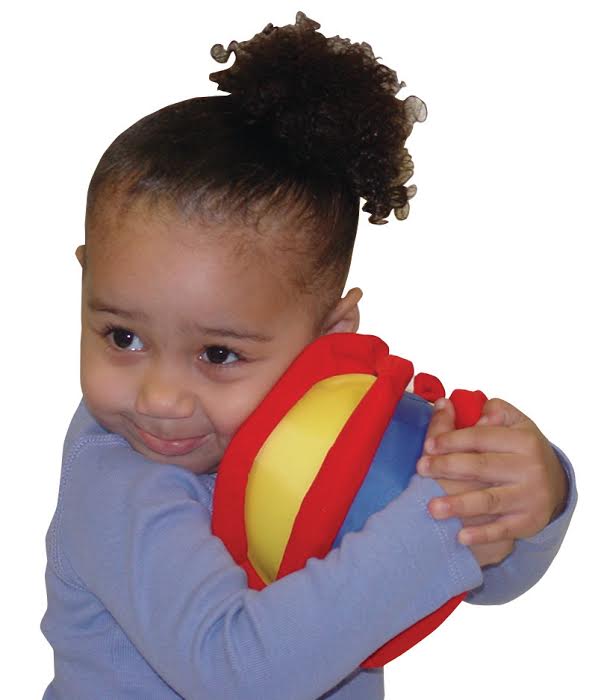
Play is one of the essential foundations of development in all children. With toys, kids learn how to socially interact, develop emotional intelligence, define motor skills, increase physical awareness, and support skills learned in the classroom. For kids with special needs, the challenges they face may discourage or avert them from having fun while playing with traditional toys. PlayAbility Toys, a specialty manufacturer and retailer, designs and produces products for children in the special needs community to get rid of that problem. Twelve years later, the company’s mission still holds strong, and even consumers without special needs are interested in what PlayAbility has to offer.
According to Adam Small, CEO of PlayAbility Toys, there is a lot of evidence about sensory toys that engage sight, sound, and touch at a young age help with cognitive development.
“If your 1-year-old is playing with a Buddy Dog, a toy that has bumps, crinkles, and vibrates when you pull on its tail, all these little features help their synapses and brain connect,” says Small. “This means their minds engage more with the toy than just an everyday toy. Our toys are meant for the special needs community, but they’re also showing a lot of success in the general community because of all the qualities we put into them.”
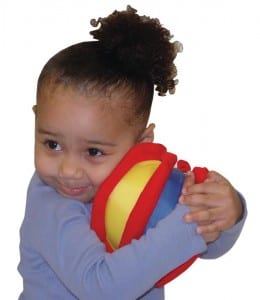
PlayAbility Toys originally started as Build n Bud in 2002. The founder and lead engineer, Bud Fraze, was approached by a friend whose son was born with Bilateral Anophthalmia. This disease causes a child to be born without eyes. According to Small, the friend’s son was frustrated when he would drop a normal, everyday ball because he couldn’t hear where it went and couldn’t grab it easily. “He needed a ball with no batteries, had sound, and was easy to grab,” says Small. This scenario inspired Fraze to develop the Rib It Ball, which is a sleeve that goes on a beach-sized ball. It has vibrant colors, ribs all the way around, and a crinkly material inside of it—so when it drops, it doesn’t roll very far. According to Small, this product has been a massive success in the visually impaired community. Fraze saw the demand for this product and continued to produce these types of toys.
The company relocated to Tuscon, Ariz. in 2009 and turned into PlayAbility Toys, where it got involved with a local investment group, Desert Angels.
“A number of our shareholders are really big into social enterprise, which is essentially for-profit businesses that have a philanthropic goal. We make toys, but we make toys specifically for children who need a little bit of extra in those toys,” Small explains.
PlayAbility Toys is unique in that it is both a manufacturer and distributor. Once the toys are manufactured, they are stored in a warehouse in Tucson. They are then distributed through the company’s retail website, as well as various wholesalers that it works with.
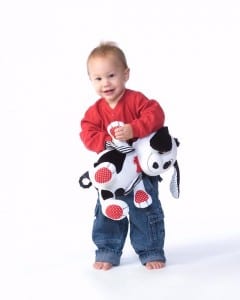
The company’s website allows customers to browse through its toys by special need or by toy category. The physical challenges category includes Cerebral Palsy, Down syndrome, Muscular Dystrophy, Muscular Sclerosis, paralysis, Rheumatoid Arthritis, Spina Bifida, and traumatic brain injury. The special needs by type includes the Autism spectrum, blind or visually impaired, cognitive challenges, deaf and hard of hearing, and speech impairments.
The company works with experts, parents, and the community to create a wide variety of toys based on each of these specific needs. The lead toy designer, Joyce Lopez, is a Child of a Deaf Adult (CODA). According to Small, Lopez has lived her entire life in the hearing impaired community and has been in the toy industry for more than 20 years. Lopez helps the company connect with therapists and educators who are specifically in the niche of special needs. They give the toy designers insight as to how kids with each specific disease would benefit most from a toy, as well as suggestions and advice.
“Then we come up with products that aren’t your everyday toy, but they’re toys that are fun, but offer these additional therapeutic benefits,” says Small.
In addition to professionals in the field, the company works with child life specialists. According to Small, child life specialists work with children in hospitals to promote their well-being and happiness during their stay. Since they work with kids who often need to return for multiple hospital stays, they offer the company insight as to what toys kids like most. For example, the child life specialists gave the company inspiration for a toy for visually impaired children.
“They love to color, but can’t feel the pictures,” says Small. “So that’s when we made our Color SENSEation, where all of the images have raised lines so the children can feel the images that they’re coloring.”
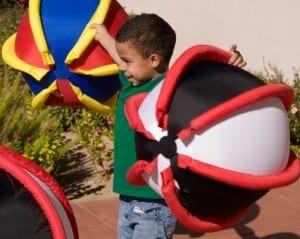
As well as providing consumers with toys for a wide scope of special needs, the toys are designed for a wide range of ages. The vast majority of PlayAbility products are meant for young children, but the whole concept of a developmental toy doesn’t have to do with age—it has to do with cognitive development. Therefore, many of PlayAbility Toys are used by people of all ages and are found in a wide variety of places, such as hospitals, nursing homes, schools, and clinics.
“We’ve actually seen that in our Rib It Ball, which is sold through one of our retailers specifically to the senior citizen community,” says Small. “Senior citizens who have dementia and Alzheimer’s need toys and devices that are stimulating to their brains.”
Since the Rib It Balls are light and easy to hold, they have contrasting colors, and they make crinkly sounds, someone sitting in a wheelchair can engage with it far more than just an average rubber ball.
In addition to the Rib It Balls, other sensory toys that PlayAbility offers are very popular because they implement tactile, auditory, and visual stimulation that makes them more than just a toy. The plush toys Buddy Dog and Echo the Elephant have different textures and crinkly vests, they make noises, and they each have squeaky hands. Both plush animals also have a Velcro patch on the back.
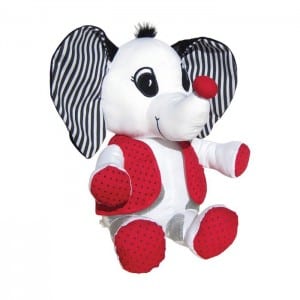
“Children with Autism tend to be drawn to Buddy Dog and Echo Elephant because if they’re having a meltdown, they typically need to focus on one thing to soothe themselves. Repetitive motions like velcroing and unvelcroing something is very popular,” says Small.
PlayAbility’s Toys like Buddy Dog, Echo the Elephant, and the Rib It Ball also sell well in the general toy market for typically developing children, according to Small. The See It and Sign It Level 1 and Level 2 games, which teach American Sign Language, have become popular items in the general market as well, due to the trendiness of parents teaching their infants sign language.
“We want the concept of offering these toys to be not such a niche anymore,” Small explains. “With the number of kids with autism, this is something that’s growing. You probably know someone in any way, shape, or form, who has a sibling, aunt, uncle, or child who is affected by some sort of disability or cognitive disability in general.”
Although other manufacturers pose as competitors to PlayAbility Toys, Small says that he hopes that others will start to follow the company’s lead. Additionally, all retailers should be aware of the needs of special needs children, and how their toys should differ.
“I think a lot more people are starting to understand not only the business side of it, but more of what these communities need,” Small said. “We are hoping we can be one of the few frontrunners to really make an impact and make sure these toys really make a difference for these children. This community is very large and very underserved.”
According to Small, one of the company’s largest consumers is the American Printing House for the Blind. They purchase a lot of Rib It Balls, Paint Pop Palettes, and Color SENSEation books. Paint Pop Palettes is a paint set specifically designed for blind children and has Braille and areas that the paint can snap on so it doesn’t tip over. These products give kids the full artistic experience, even though the people using them are completely blind.
“It is a difficult market to sell to because our toys offer such tactile and auditory stimulation that it is really hard to get across its true value via the Internet, but we find that once these toys are in brick-and-mortar stores and customers can actually touch, feel, play, and explore them, then customers really feel the value,” says Small.
PlayAbility Toys was most recently at the American Specialty Toy Retailing Association’s (ASTRA) annual trade show, which brings together all facets of the specialty toy market together.
“We got a lot of new retailers and a lot of potential leads,” says Small. “It’s really exciting to see that a lot of general toy stores are becoming more interested in supplying specialty toys for the special needs community.”
As PlayAbility Toys continues to design and manufacture toys for the special needs community, it hopes to send a message to other companies in the toy business to support all those who are dedicated to helping special needs children. It strives to continue to improve the quality of play for all developing kids.

